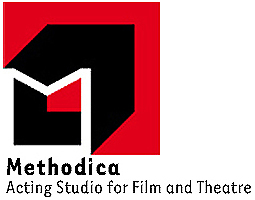The Stanislavsky Method acting System, is a systematic approach to training actors to work from the inside outward. This system is at some point different from but not a rejection of what Stanislavsky states earlier in Affective Memory.
At the beginning, Stanislavsky proposed that actors study and experience subjective emotions and feelings and manifest them to audiences by physical and vocal means - Theatre language. While his System focused on creating truthful emotions and then embodying these, he later worked on The Method of Physical Actions.
about the Method acting system of Stanislavsky
The Stanislavsky Method acting System, is a systematic approach to training actors to work from the inside outward. This system is at some point different from but not a rejection of what Stanislavsky states earlier in Affective Memory.
At the beginning, Stanislavsky proposed that actors study and experience subjective emotions and feelings and manifest them to audiences by physical and vocal means - Theatre language. While his System focused on creating truthful emotions and then embodying these, he later worked on The Method of Physical Actions. This was developed at the Opera Dramatic Studio from the early 30s, and worked like Emotion Memory in reverse. The focus was on the physical actions inspiring truthful emotion, and involved improvisation and discussion. The focus remained on reaching the subconscious through the conscious.
Stanislavsky survived the Russian Revolution of 1905 and the Russian Revolution of 1917, with Lenin apparently intervening to protect him.
In 1918, Stanislavsky established the First Studio as a school for young actors and wrote several works: those available in English translation include: An Actor Prepares, Building a Character, Creating a Role, and the autobiography My Life in Art. Stanislavsky always thought of his system as if it were a table of contents for a large book which dealt with all aspects of acting. His final work, now known as The Method of Physical Actions (see Stanislavsky System) , is in no way a rejection of his early interest in sense and affective memory. At no time did he ever reject the notion of emotion memory; he simply found other means of accessing emotion, among them the absolute belief in given circumstances; the exercise of the imagination; and the use of physical action. Konstantin Stanislavsky had a dictum that he probably believed throughout his life: that one should always approach a role as directly as possible, and then see if it "lives".
If the actor and the role connect, and the role comes to life, why apply a technique, a system? Such a success may only happen once or twice in one's life -- or never -- so the remainder of one's performances require technique. However, each individual actor must decide whether or not an approach 'works' for him.
About Stanislavsky system:
The Stanislavski System is not an abstraction; it is an activity and a practice. It is a working method for working actors. It is a system because it is coherent, logical - systematic. Anyone who imagines that the System will yield results through a purely intellectual, detached comprehension of its basic ideas will be disappointed. The System is not a theoretical construct, it is aprocess. The texts of Stanislavski which we possess are a guide to that process and an invitation to experience it directly, personally and creatively.
www.studiomethodica.com




